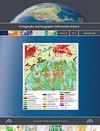水文测深选择中基于标签的水深数据概化
IF 2.4
3区 地球科学
Q1 GEOGRAPHY
Cartography and Geographic Information Science
Pub Date : 2022-01-24
DOI:10.1080/15230406.2021.2014974
引用次数: 8
摘要
摘要:水文测深选择是将高分辨率测深数据推广到一个更易于管理的子集的过程,该子集能够支持海图编辑或测深建模,因此是航海制图的一项基本任务。随着技术的改进和以更高分辨率收集测深数据,对尊重航海制图约束的自动综合算法的需求增加,因为这一阶段的误差会转移到最终产品中。目前,水文探测选择的自动化算法依赖于基于半径和网格的方法;然而,它们的输出包含大量违反制图限制的密集测深,从而增加了随后(主要是手动)制图测深选择的负担和成本。这项工作提出了一种新的基于标签的泛化算法,该算法利用图表上符号化深度值的物理维度来避免深度标签在尺度上的过度绘制。此外,还对海图进行了基于制图约束的验证测试,将所提出的算法的结果与基于半径和网格的方法进行了比较。结果表明,基于标签的泛化方法最符合功能性(安全性)和易读性的约束。本文章由计算机程序翻译,如有差异,请以英文原文为准。
Label-based generalization of bathymetry data for hydrographic sounding selection
ABSTRACT Hydrographic sounding selection is the process of generalizing high-resolution bathymetry data to a more manageable subset capable of supporting nautical chart compilation or bathymetric modeling, and thus, is a fundamental task in nautical cartography. As technology improves and bathymetric data are collected at higher resolutions, the need for automated generalization algorithms that respect nautical cartographic constraints increases, since errors in this phase are carried over to the final product. Currently, automated algorithms for hydrographic sounding selection rely on radius- and grid-based approaches; however, their outputs contain a dense set of soundings with a significant number of cartographic constraint violations, thus increasing the burden and cost of the subsequent, mostly manual, cartographic sounding selection. This work presents a novel label-based generalization algorithm that utilizes the physical dimensions of the symbolized depth values on charts to avoid the over-plot of depth labels at scale. Additionally, validation tests based on cartographic constraints for nautical charting are implemented to compare the results of the proposed algorithm to radius and grid-based approaches. It is shown that the label-based generalization approach best adheres to the constraints of functionality (safety) and legibility.
求助全文
通过发布文献求助,成功后即可免费获取论文全文。
去求助
来源期刊
CiteScore
5.20
自引率
20.00%
发文量
23
期刊介绍:
Cartography and Geographic Information Science (CaGIS) is the official publication of the Cartography and Geographic Information Society (CaGIS), a member organization of the American Congress on Surveying and Mapping (ACSM). The Cartography and Geographic Information Society supports research, education, and practices that improve the understanding, creation, analysis, and use of maps and geographic information. The society serves as a forum for the exchange of original concepts, techniques, approaches, and experiences by those who design, implement, and use geospatial technologies through the publication of authoritative articles and international papers.

 求助内容:
求助内容: 应助结果提醒方式:
应助结果提醒方式:


